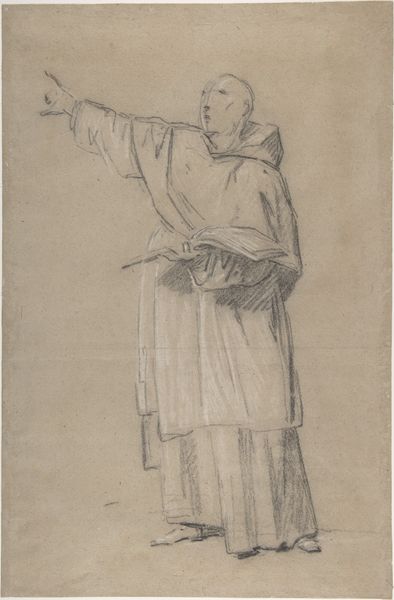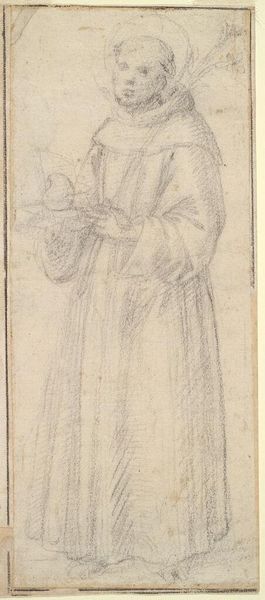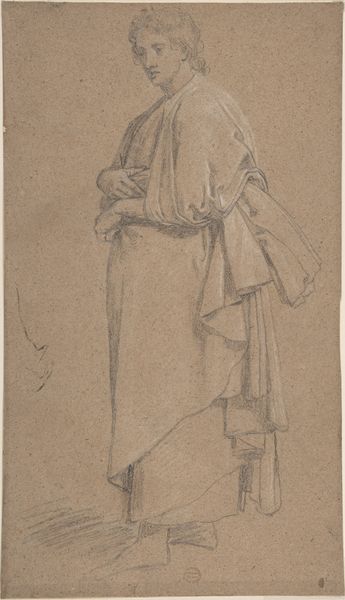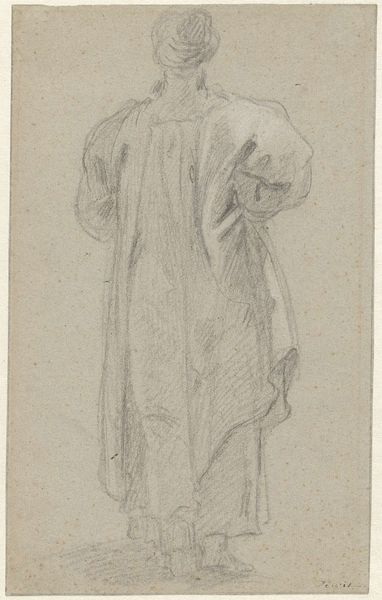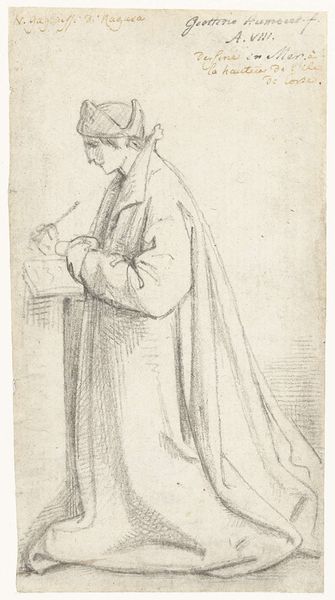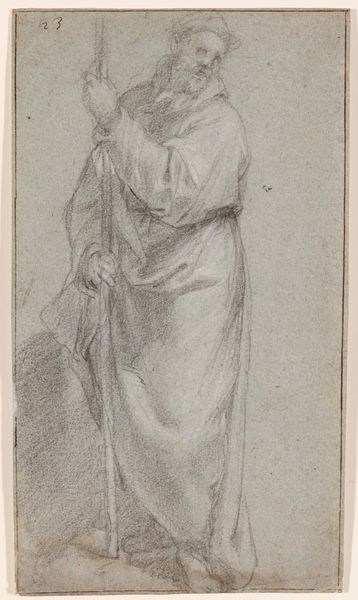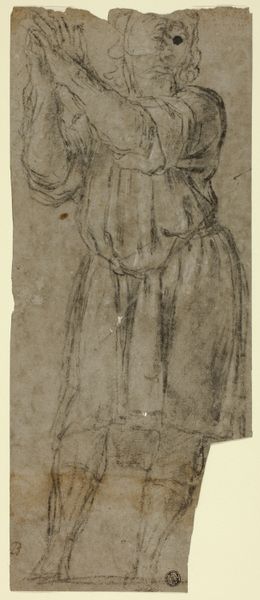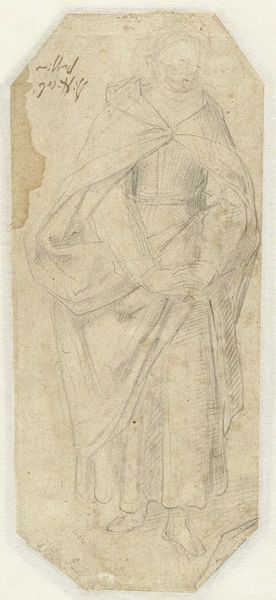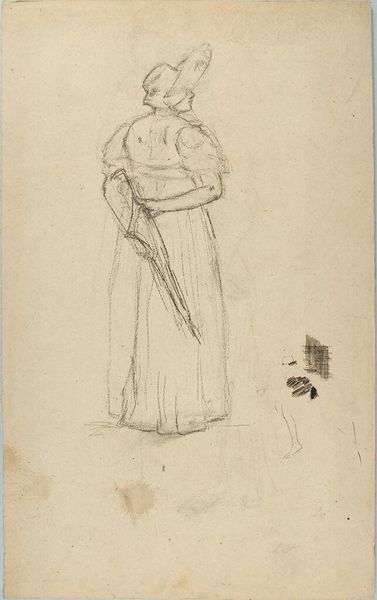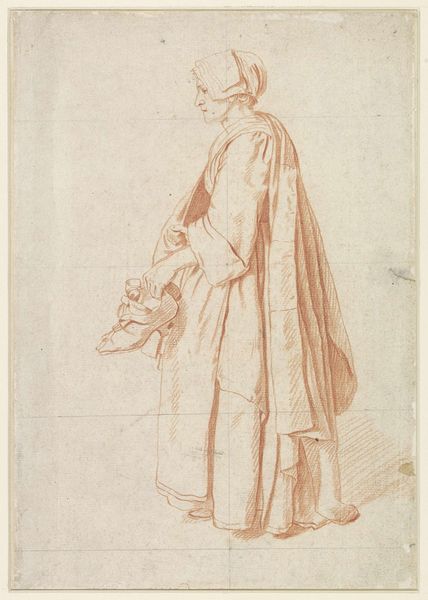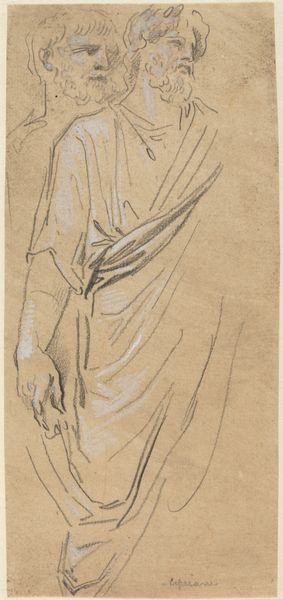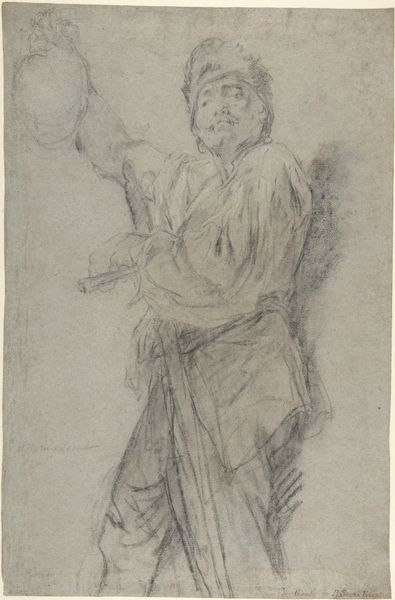
drawing, print, pencil
#
portrait
#
drawing
# print
#
pencil sketch
#
figuration
#
romanticism
#
pencil
#
academic-art
Dimensions: sheet: 12 1/2 x 5 1/2 in. (31.8 x 14 cm)
Copyright: Public Domain
Editor: So here we have Otto Speckter's "Standing Youth, Looking Up," a pencil drawing, sometime between 1820 and 1871. There's a delicate vulnerability about him that's really captivating. What's your read on this piece? Curator: You know, it strikes me as a wonderfully intimate, quiet moment. Speckter has captured this figure gazing upward, almost lost in thought or perhaps even yearning. The simplicity of the pencil strokes adds to this sense of contemplation, doesn't it? Have you noticed how the light seems to catch only certain planes of the boy's body? Editor: It's like he's reaching towards something… ethereal. The looseness of the drawing makes him feel less posed and more alive. Almost caught in the act of dreaming, maybe? Curator: Precisely! It invites us to fill in the gaps, to project our own hopes and desires onto him. This era was steeped in Romantic ideals and this work evokes the era's interest in sentiment. Considering it's a study—likely for a larger work—that feeling is almost amplified, a moment caught mid-breath. What do you think the artist aimed to communicate, if anything? Editor: I see the romanticism, the way it fixates on youth and the human spirit, even through such a simple medium like pencil. Perhaps Speckter was exploring ideas of faith and contemplation? Curator: I believe you’re onto something; that element of faith is undeniable. I find this figure quite thought provoking; it seems to whisper so much about vulnerability and introspection. I might even feel invited to introspect when viewing the artwork for longer. Editor: Absolutely! It makes you wonder about his story, the questions he might be asking himself. Thanks for your insights! Curator: It's a dialogue, isn't it? We see the artist's questions mirrored in our own interpretations, separated by time but connected through art.
Comments
No comments
Be the first to comment and join the conversation on the ultimate creative platform.
